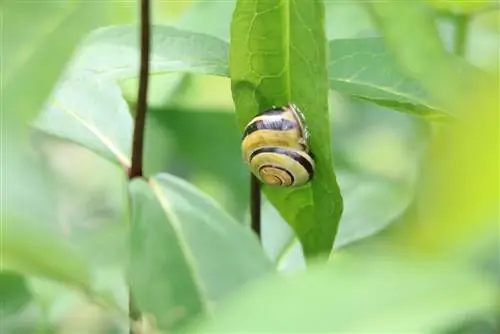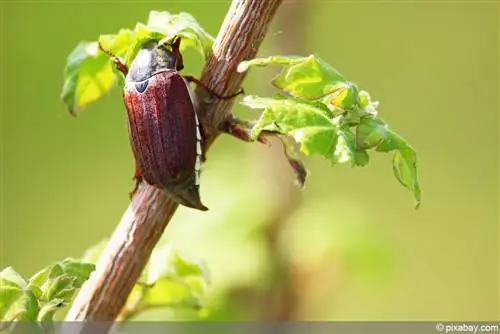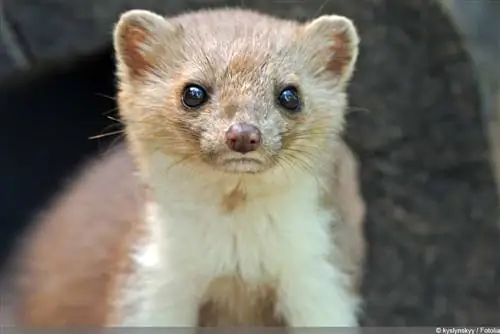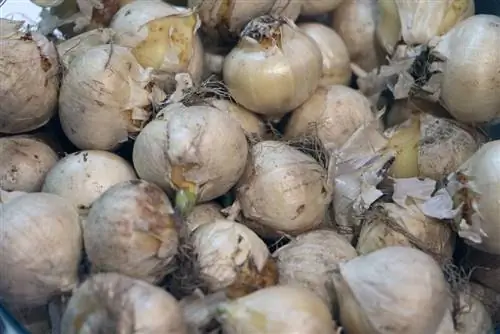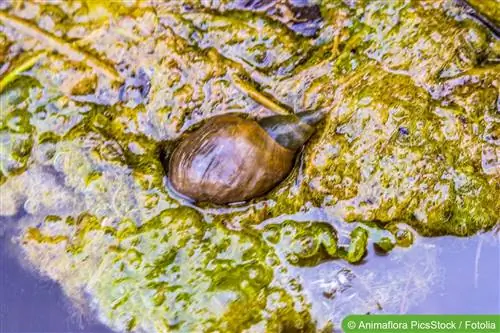- Author admin [email protected].
- Public 2023-12-17 03:39.
- Last modified 2025-01-24 12:45.
Because their natural enemies are missing in the garden, slugs become a mass nuisance in wet summers. Many gardeners then take out the chemical cudgels and fight the molluscs using all means possible. Often to the detriment of the entire garden. If you allow natural diversity in your garden and know your allies from the animal kingdom, the snail problem will almost solve itself.
Insects
Hobby gardeners are often amazed when they learn how many insects are natural enemies of snails. There are unexpectedly many insects for which snail eggs and adults are desirable prey. Almost all carnivorous insects attack the slimy pests. However, not everyone is able to kill a snail. For some insects, washed-out specimens of the pests are simply too big. However, some insects have become very successful snail hunters. Above all, many beetles and their larvae
Beetle larvae & beetles
The larvae of some species of beetles, especially the larvae of fireflies, use snails as a source of protein. The larvae of fireflies feed almost exclusively on them over a period of several years. They simply follow the slime trail and kill their victims with poisonous bites. Other beetle larvae, such as the red-yellow larvae of the soft beetle family or the larvae of the soft beetle, have also specialized in hunting snails. Even adult specimens of the defenseless and slow snails are easy prey for them.
Various ground beetles, such as the leather ground beetle, the golden ground beetle, spade beetle and gold bar beetles are specialists in hunting snails. Because of their preference for the molluscs, they are called “snail hunter beetles” in English-speaking countries. The molluscs are also on the menu of carrion beetles and some short-winged beetles. The best known are the black snail hunter, the gravedigger and the black rot beetle.
Centipedes, spiders and ants
Nocturnal centipedes are specialized in the eggs of garden pests and do not disdain even small, young snails if they get hold of them. Snail eggs are also sought after by various species of spiders. These include many types of harvestmen such as Schuster and Kanker. One of these species is even called the snail canker because they almost exclusively feed on snails. Individual ants have little chance against the sticky slime produced by the molluscs as a defense. Since ants usually go in search of food in large numbers, they can overcome the slimy snail defenses and kill the snail.
Flying Insects
Various flies, which means that the fly larvae also hunt the garden pests. The best-known example is the horn fly, whose larvae feed almost exclusively on molluscs. In English they are therefore nicknamed “snail killing flies”, in German “snail killing flies”.
Settling insects in the garden
Insects feel comfortable in a natural garden with as many different herbs, flowers, bushes and trees as possible and can easily find a habitat that suits their needs.
- Set up wilderness corners in the garden and leave them to their own devices
- Dead wood, leaves and stones provide habitat for numerous insects
- Herb beds and rock gardens are insect paradises
- Attach small and large insect hotels to suitable steles
- Planting flowers and bushes with different bloom times
Many insects not only help to combat pests biologically, they also serve as food for other animals in the garden.
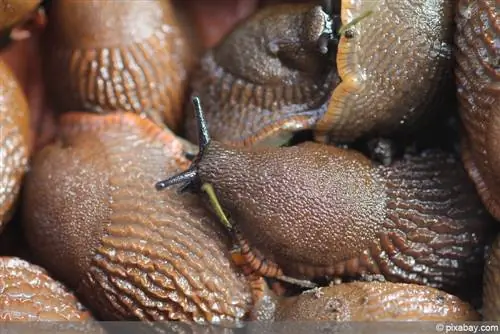
Amphibians and snakes
Toads are known to be valuable helpers in fighting snails. If you have toads in your garden, you don't have to worry about a snail plague. Although some people are disgusted by these amphibians, which are not exactly beautiful, no other animal can beat them when it comes to fighting snails. Common toads in particular are widespread in our latitudes and are always welcome by gardeners who know their abilities as bargain hunters. Garlic toads and natterjack toads are somewhat rarer. Midwife toads and green toads are even rarer. The slowworms, which are often viewed as snakes but are amphibians, also eat slugs. Also various frogs, the fire salamander, the alpine salamander and lizards. However, there are restrictions on snail control for small frogs, salamanders and other small amphibians. They cannot eat large specimens of the mollusks. Only young animals are on their menu. Nevertheless, they are useful helpers if the molluscs are to be biologically prevented from reproducing and spreading. The snail snake is one of the native snakes whose prey also includes slugs. Unfortunately, the snakes, which are harmless to humans, are rarely found in the garden.
Settling amphibians in the garden
Amphibians spend part of their lives on land and most of their lives in water. A spacious garden pond, designed according to the needs of the animals, is therefore essential so that amphibians can settle and contribute to a snail-free garden.
- The amphibian pond should be designed close to nature
- A sunny to semi-shady location is optimal
- A water area of 20 square meters or more is recommended
- Shallow shore regions and a central low area are important
- Steps in the pond should be covered with a layer of gravel sand
- Native aquatic plants offer hiding places and spawning places
- Amphibians love nutrient-poor water without much movement
Dogs and cats are enemies of useful helpers. They see dogs as toys and cats as potential prey and should be kept away from them if possible. The garden should also remain poison-free for the amphibians.
Mammals
Together with moles and shrews, the native brown-breasted hedgehog is one of the most successful snail hunters. The animals, which are active at dusk and at night, are now increasingly moving into human settlements where they find food and shelter. Contrary to popular belief, hedgehogs are not vegetarians. Their diet includes mollusks as well as ground beetles, earthworms, centipedes and other insects. Mini and domestic pigs are also not fond of eating snails. However, keeping cuddly and house-trained animals in a species-appropriate manner requires a lot of effort and is not for everyone.
Birds
Birds, along with toads and hedgehogs, are considered the most diligent snail hunters. When the young slugs hatch from their eggs in spring, they become sought-after prey for numerous bird species. Blackbirds, thrushes, magpies, herons, starlings, storks and rooks are enemies of snails and welcome helpers if the garden pests are to be combated biologically. Almost all songbirds eat snails. Provided their prey isn't too big. Like all birds, song thrushes have the problem that their beaks have no teeth to bite into their prey snails. However, over the course of their evolutionary history, the intelligent birds have developed a method by which they can prepare the ribbon snails, which are their favorite food, in a way that suits their beaks. They use a stone, the so-called thrush forge, and smash the captured snail until they can eat it without any problem.
Ducks and chickens
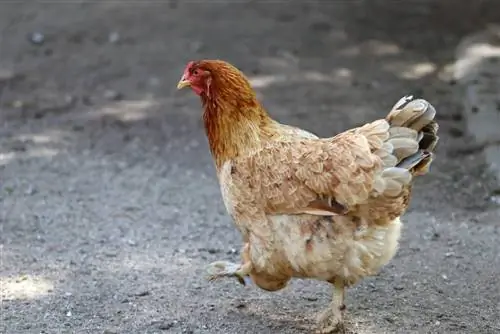
In addition to the local songbirds, ducks and chickens are also considered excellent helpers in fighting snails. Indian runner ducks and khaki campell ducks in particular are natural enemies of the molluscs and are very successful at hunting snails. It is said that one pair of ducks is enough to keep a large garden free of slugs. The garden also has to be large to keep the ducks. The flightless animals also need a stable for the night, a pond and always a partner in order to really feel comfortable. Chickens are also very suitable for ridding gardens of snail nests. The feathered animals are a little less demanding than ducks, but also require a stable and a large garden that offers them enough space.
Settling birds in the garden
Blackbirds, thrushes, starlings and other birds need a quiet place where they can raise their young protected from enemies. If you offer snail hunters suitable nesting places, they can settle in your own garden relatively easily. Of course, the food supply in the surrounding area must also be right. Birds need a varied diet with different prey. Above all, insects are on their menu. If you want to ensure that birds feel at home in your garden, you should also ensure that insects feel comfortable again. In this way, gardeners gain two allies who can fight the enemy in their garden for them.

